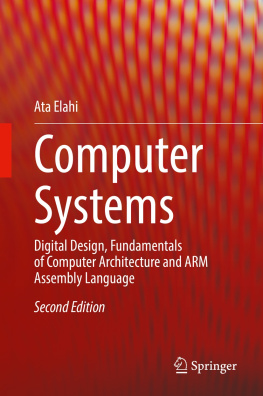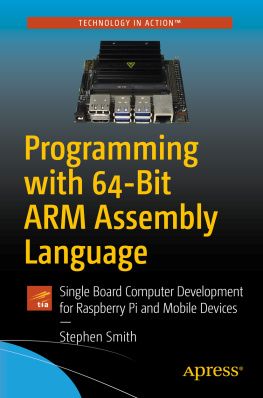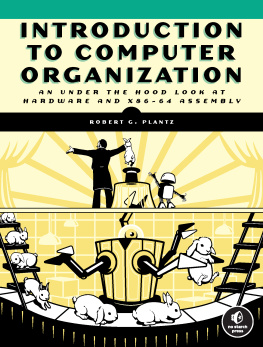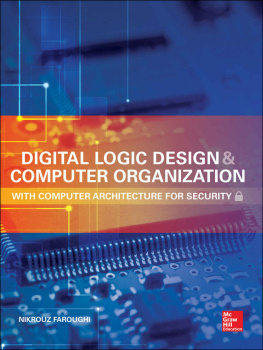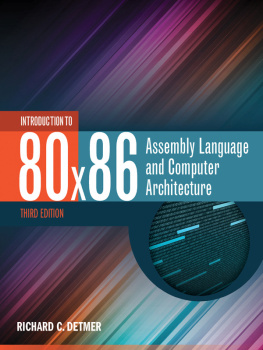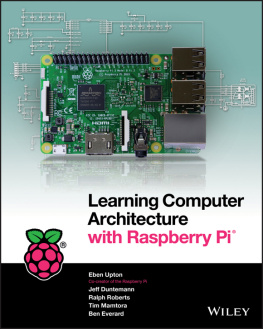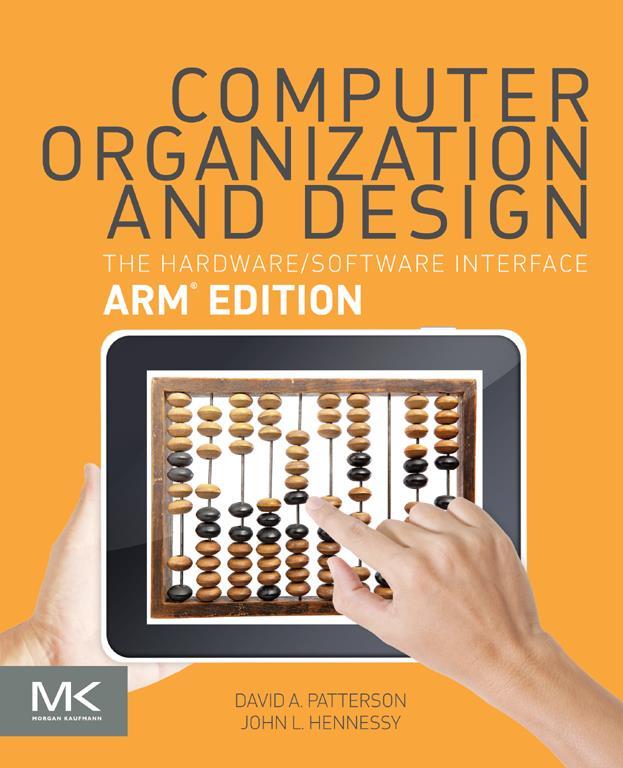Table of Contents
List of illustrations
- Figures in 1
- Figures in 2
- Figures in 3
- Figures in 4
- Figures in 5
- Figures in 6
- Figures in Appendix A
- Figures in Appendix B
- Figures in Appendix C
- Figures in Appendix D
Landmarks
Table of Contents
Computer Organization and Design
The Hardware/Software Interface: ARM Edition
David A. Patterson
University of California, Berkeley
John L. Hennessy
Stanford University
With contributions by
Perry Alexander
The University of Kansas
Peter J. Ashenden
Ashenden Designs Pty Ltd
Jason D. Bakos
University of South Carolina
Javier Diaz Bruguera
Universidade de Santiago de Compostela
Jichuan Chang
Google
Matthew Farrens
University of California, Davis
David Kaeli
Northeastern University
Nicole Kaiyan
University of Adelaide
David Kirk
NVIDIA
Zachary Kurmas
Grand Valley State University
James R. Larus
School of Computer and Communications Science at EPFL
Jacob Leverich
Stanford University
Kevin Lim
Hewlett-Packard
John Nickolls
NVIDIA
John Y. Oliver
Cal Poly, San Luis Obispo
Milos Prvulovic
Georgia Tech
Partha Ranganathan
Google
Mark Smotherman
Clemson University

In Praise of Computer Organization and Design: The Hardware/Software Interface, ARM Edition
Textbook selection is often a frustrating act of compromisepedagogy, content coverage, quality of exposition, level of rigor, cost. Computer Organization and Design is the rare book that hits all the right notes across the board, without compromise. It is not only the premier computer organization textbook, it is a shining example of what all computer science textbooks could and should be.
Michael Goldweber, Xavier University
I have been using Computer Organization and Design for years, from the very first edition. This new edition is yet another outstanding improvement on an already classic text. The evolution from desktop computing to mobile computing to Big Data brings new coverage of embedded processors such as the ARM, new material on how software and hardware interact to increase performance, and cloud computing. All this without sacrificing the fundamentals.
Ed Harcourt, St. Lawrence University
To Millennials: Computer Organization and Design is the computer architecture book you should keep on your (virtual) bookshelf. The book is both old and new, because it develops venerable principlesMoores Law, abstraction, common case fast, redundancy, memory hierarchies, parallelism, and pipeliningbut illustrates them with contemporary designs.
Mark D. Hill, University of Wisconsin-Madison
The new edition of Computer Organization and Design keeps pace with advances in emerging embedded and many-core (GPU) systems, where tablets and smartphones will/are quickly becoming our new desktops. This text acknowledges these changes, but continues to provide a rich foundation of the fundamentals in computer organization and design which will be needed for the designers of hardware and software that power this new class of devices and systems.
Dave Kaeli, Northeastern University
Computer Organization and Design provides more than an introduction to computer architecture. It prepares the reader for the changes necessary to meet the ever-increasing performance needs of mobile systems and big data processing at a time that difficulties in semiconductor scaling are making all systems power constrained. In this new era for computing, hardware and software must be co-designed and system-level architecture is as critical as component-level optimizations.
Christos Kozyrakis, Stanford University
Patterson and Hennessy brilliantly address the issues in ever-changing computer hardware architectures, emphasizing on interactions among hardware and software components at various abstraction levels. By interspersing I/O and parallelism concepts with a variety of mechanisms in hardware and software throughout the book, the new edition achieves an excellent holistic presentation of computer architecture for the post-PC era. This book is an essential guide to hardware and software professionals facing energy efficiency and parallelization challenges in Tablet PC to Cloud computing.
Jae C. Oh, Syracuse University
Copyright
Publisher: Todd Green
Acquisitions Editor: Steve Merken
Development Editor: Nate McFadden
Project Manager: Lisa Jones
Designer: Matthew Limbert
Morgan Kaufmann is an imprint of Elsevier
50 Hampshire Street, 5th Floor, Cambridge, MA 02139, USA
Copyright 2017 Elsevier Inc. All rights reserved
No part of this publication may be reproduced or transmitted in any form or by any means, electronic or mechanical, including photocopying, recording, or any information storage and retrieval system, without permission in writing from the publisher. Details on how to seek permission, further information about the Publishers permissions policies and our arrangements with organizations such as the Copyright Clearance Center and the Copyright Licensing Agency, can be found at our Web site: www.elsevier.com/permissions
This book and the individual contributions contained in it are protected under copyright by the Publisher (other than as may be noted herein).
Notices
Knowledge and best practice in this field are constantly changing. As new research and experience broaden our understanding, changes in research methods or professional practices, may become necessary. Practitioners and researchers must always rely on their own experience and knowledge in evaluating and using any information or methods described herein. In using such information or methods they should be mindful of their own safety and the safety of others, including parties for whom they have a professional responsibility.
To the fullest extent of the law, neither the publisher nor the authors, contributors, or editors, assume any liability for any injury and/or damage to persons or property as a matter of products liability, negligence or otherwise, or from any use or operation of any methods, products, instructions, or ideas contained in the material herein.
All material relating to ARM technology has been reproduced with permission from ARM Limited, and should only be used for education purposes. All ARM-based models shown or referred to in the text must not be used, reproduced or distributed for commercial purposes, and in no event shall purchasing this textbook be construed as granting you or any third party, expressly or by implication, estoppel or otherwise, a license to use any other ARM technology or know how. Materials provided by ARM are copyright ARM Limited (or its affiliates).
Library of Congress Cataloging-in-Publication Data
A catalog record for this book is available from the Library of Congress
British Library Cataloguing-in-Publication Data
A catalogue record for this book is available from the British Library


